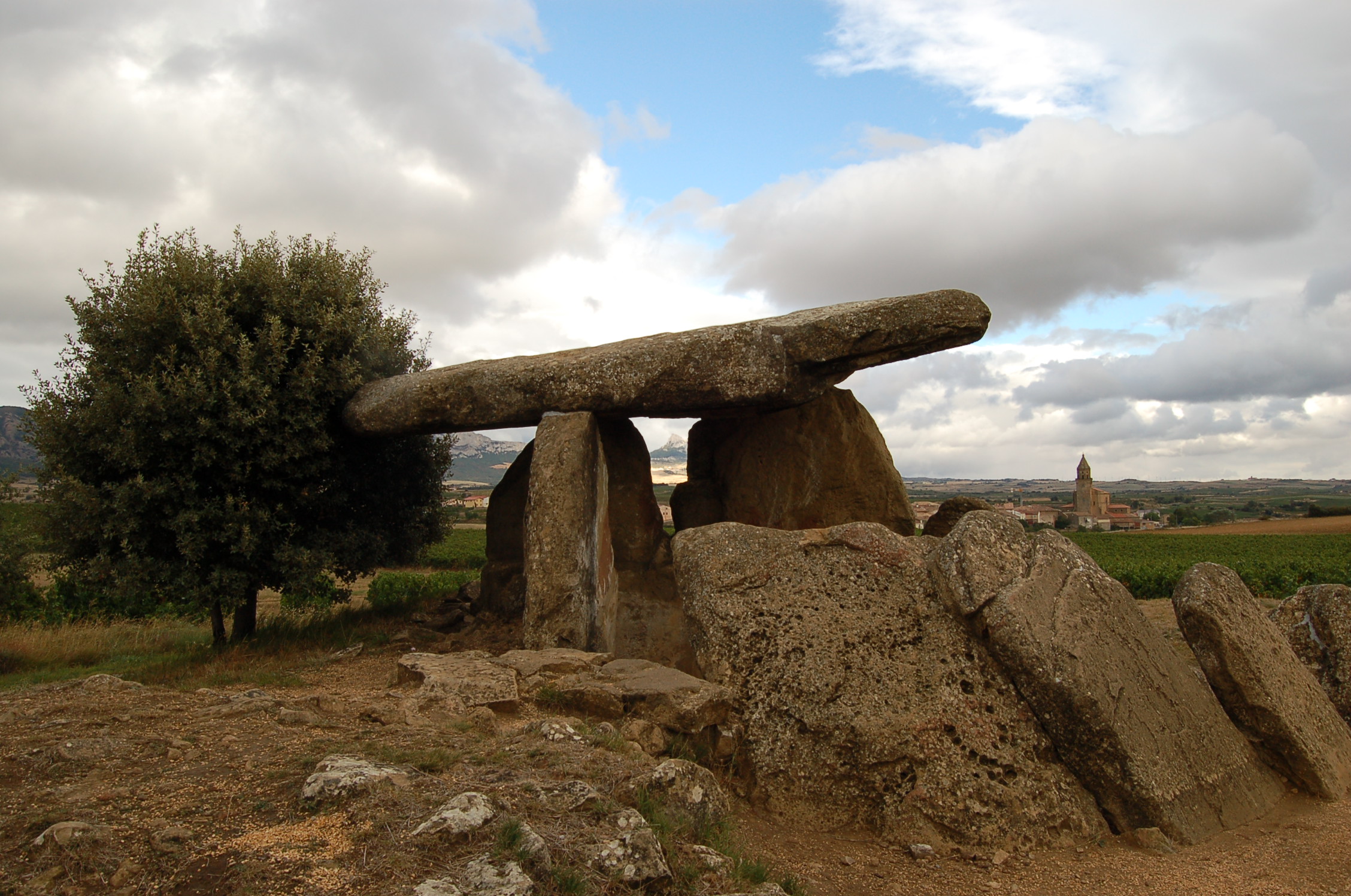|
La Chabola De La Hechicera
La chabola de la Hechicera (in Basque: ''Sorginaren Txabola'', "The Witch's Hut") is a dolmen group located in Elvillar, Álava, in the Basque Country in Spain. Three large vertical stones support a large horizontal flat stone. Nine large stones form a chamber in a polygonal shape. The corridor is made of five stones, and is divided into two. The site was probably a funerary construction to hold the remains of the people in the settlement. It was discovered in 1935 by Álvaro de Gortázar in a fair state of preservation. Jose Miguel Barandiaran explored it partially in 1936, finding two stone percutors ("percutor" is Spanish for the striking hammer of a firearm), a polished axe of ophite, fragments of pottery and human remains. The stone lying on top was found broken into three parts, but it was restored and replaced in its original position. The findings are preserved in a museum in nearby Laguardia, Álava. Before festivities in August, an Akelarre party is celebrated aro ... [...More Info...] [...Related Items...] OR: [Wikipedia] [Google] [Baidu] |
Hechicera Trikuharria Bilar 2006-09-15
"Hechicera" (English: '' Sorceress'') is the second radio single Single may refer to: Arts, entertainment, and media * Single (music), a song release Songs * "Single" (Natasha Bedingfield song), 2004 * "Single" (New Kids on the Block and Ne-Yo song), 2008 * "Single" (William Wei song), 2016 * "Single", by ... and the first track from Maná's fifth studio album, '' Sueños Líquidos'' in 1997. On the week of December 13, 1997, the song debuted and lasted only one week at the number thirty-six spot on the U.S. Billboard Hot Latin Tracks. It was nominated for a Lo Nuestro Award for Video of the Year. Charts References {{authority control 1997 singles Maná songs Songs in Spanish Songs written by Fher Olvera Songs written by Alex González (musician) 1997 songs Warner Music Latina singles ... [...More Info...] [...Related Items...] OR: [Wikipedia] [Google] [Baidu] |
Laguardia, Álava
Laguardia ( eu, Guardia) is a town and Municipalities of Spain, municipality located in the southern province of Álava, in the north of Spain; it belongs to the region of Rioja Alavesa, in the Basque Autonomous Community. It has a population of 1,500; but in the past it had 2,500. The place lies over a hill and it is surrounded by a wall that the King Sancho the Strong ordered to build. There are still preserved five different entries to access the city. Their names are: ''Mercadal'', ''Carnicerías'' (Butchers), ''Páganos'', ''San Juan'' and ''Santa Engracia''. Additionally, the streets and surroundings of Laguardia still keep a medieval atmosphere that give the city an ancient touch. Regarding the economy, its main strength is the wine industry. Indeed, the wine is elaborated and processed in numerous wineries. Toponym During the Middle Ages, it appeared with names such as ''Leguarda, Giardia, Guard, Guoardia, Lagarde,'' and ''Laguoardia'' until the current name was finally ... [...More Info...] [...Related Items...] OR: [Wikipedia] [Google] [Baidu] |
Tourist Attractions In Álava
Tourism is travel for pleasure or business; also the theory and practice of touring (other), touring, the business of attracting, accommodating, and entertaining tourists, and the business of operating tour (other), tours. The World Tourism Organization defines tourism more generally, in terms which go "beyond the common perception of tourism as being limited to holiday activity only", as people "travelling to and staying in places outside their usual environment for not more than one consecutive year for leisure and not less than 24 hours, business and other purposes". Tourism can be Domestic tourism, domestic (within the traveller's own country) or International tourism, international, and international tourism has both incoming and outgoing implications on a country's balance of payments. Tourism numbers declined as a result of a strong economic slowdown (the late-2000s recession) between the second half of 2008 and the end of 2009, and in consequence of t ... [...More Info...] [...Related Items...] OR: [Wikipedia] [Google] [Baidu] |


